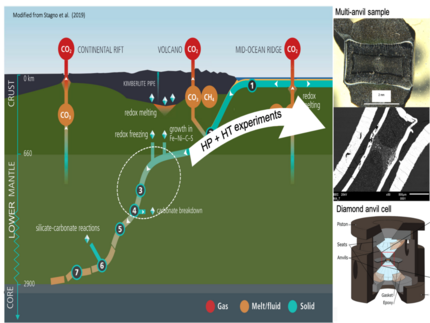Understanding the stability of carbonates in the lower mantle
Lately, carbonates have been suspected to be major minerals responsible for transportation of carbon from the Earth’s surface to its deep interior. Understanding their stability and their chemical interactions at great depths is critical for understanding the storage capacity and fluxes of carbon into the Earth interior. Since only few, tiny samples of the Earth’s lower mantle get to the surface, we need to simulate pressure (Gigapascals) and temperature (≥ 1500 K) conditions of the Earth’s interior, using hydraulic multi-anvil presses and diamonds anvil cells. From the results, mineral phases and their composition, observed in these experiments we will expand our knowledge on the Deep Carbon Cycle.

